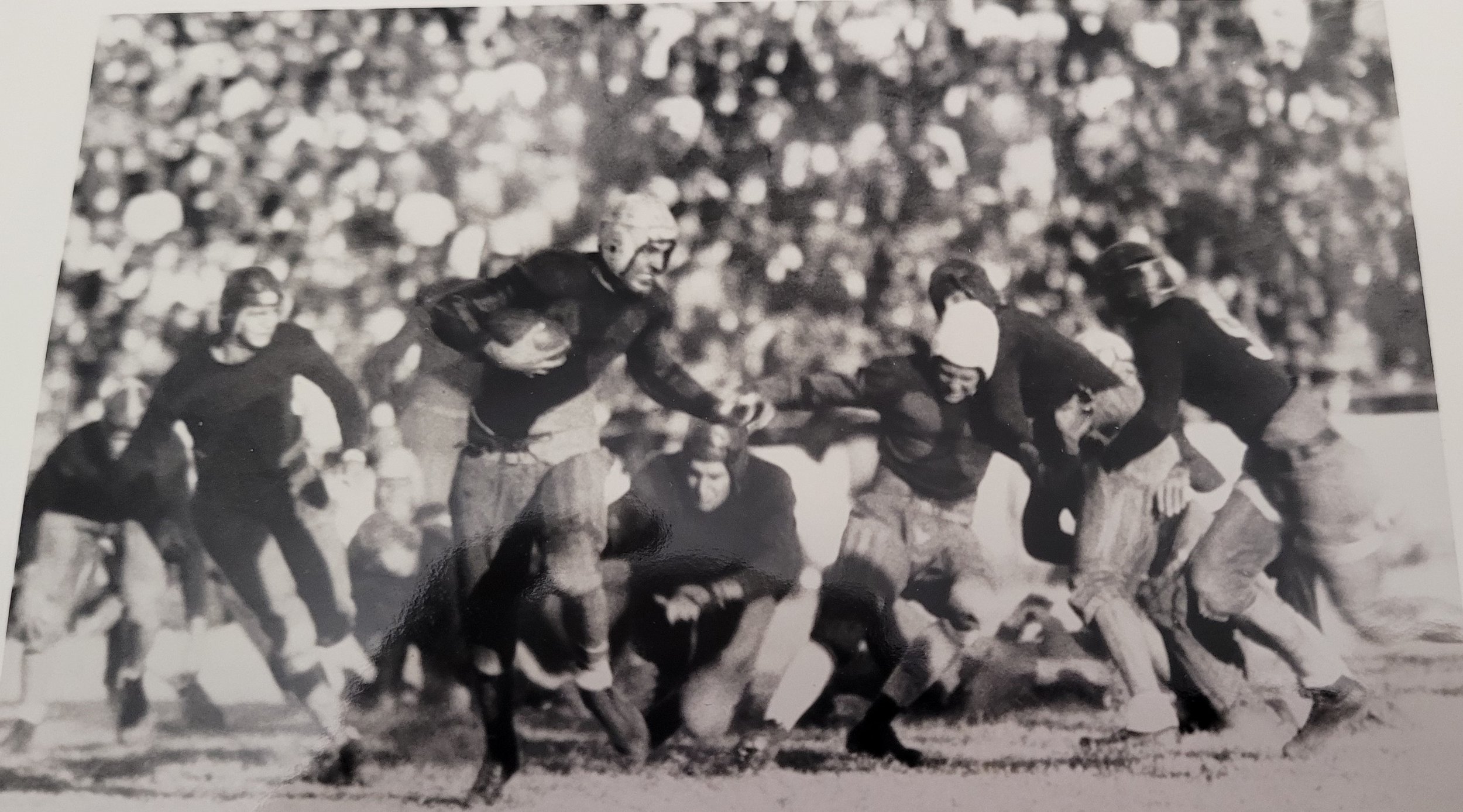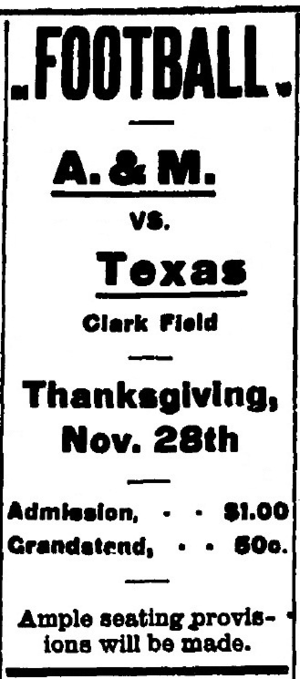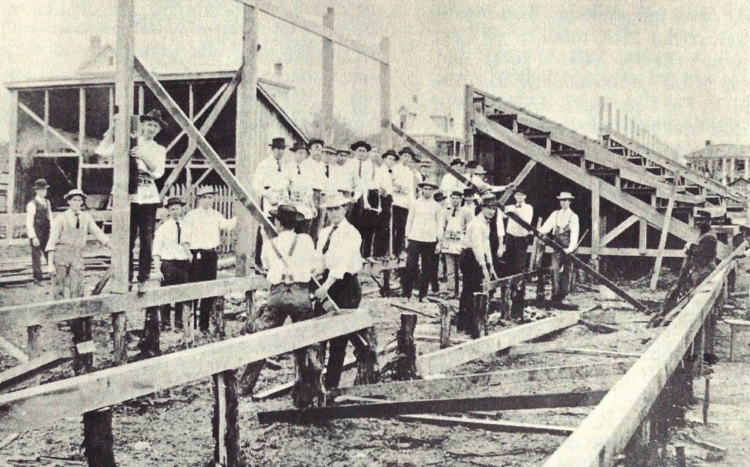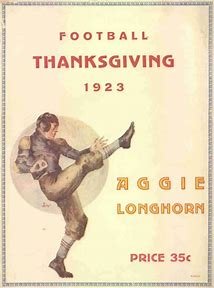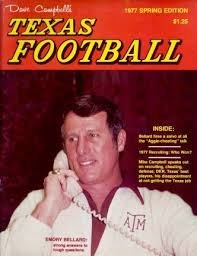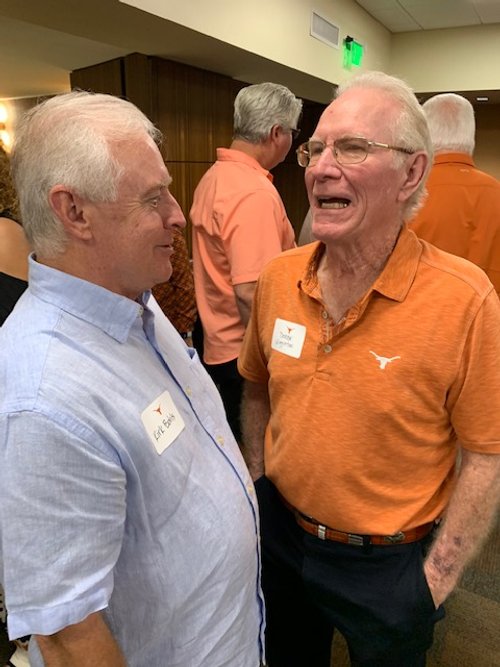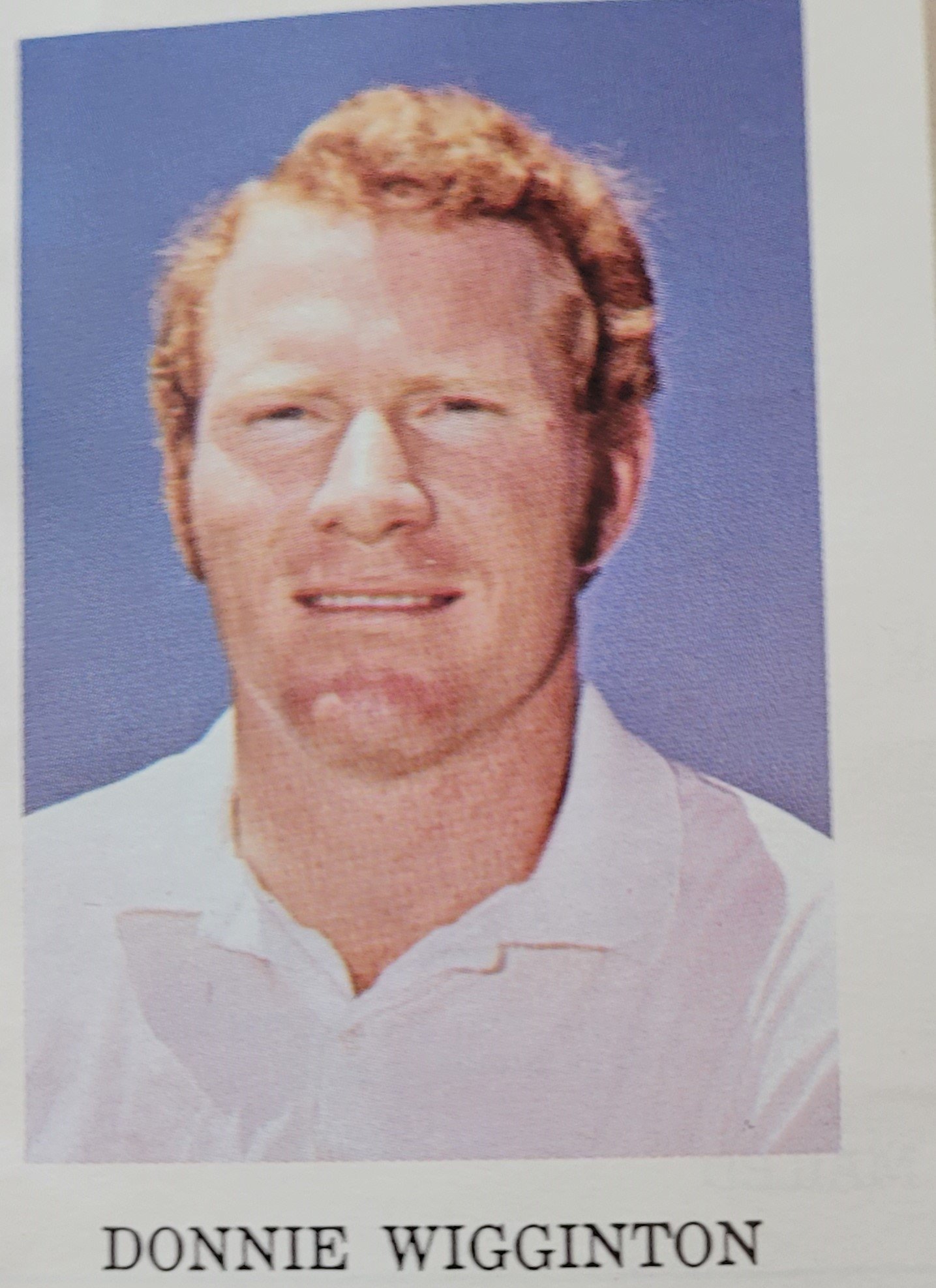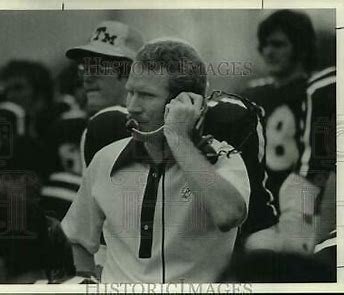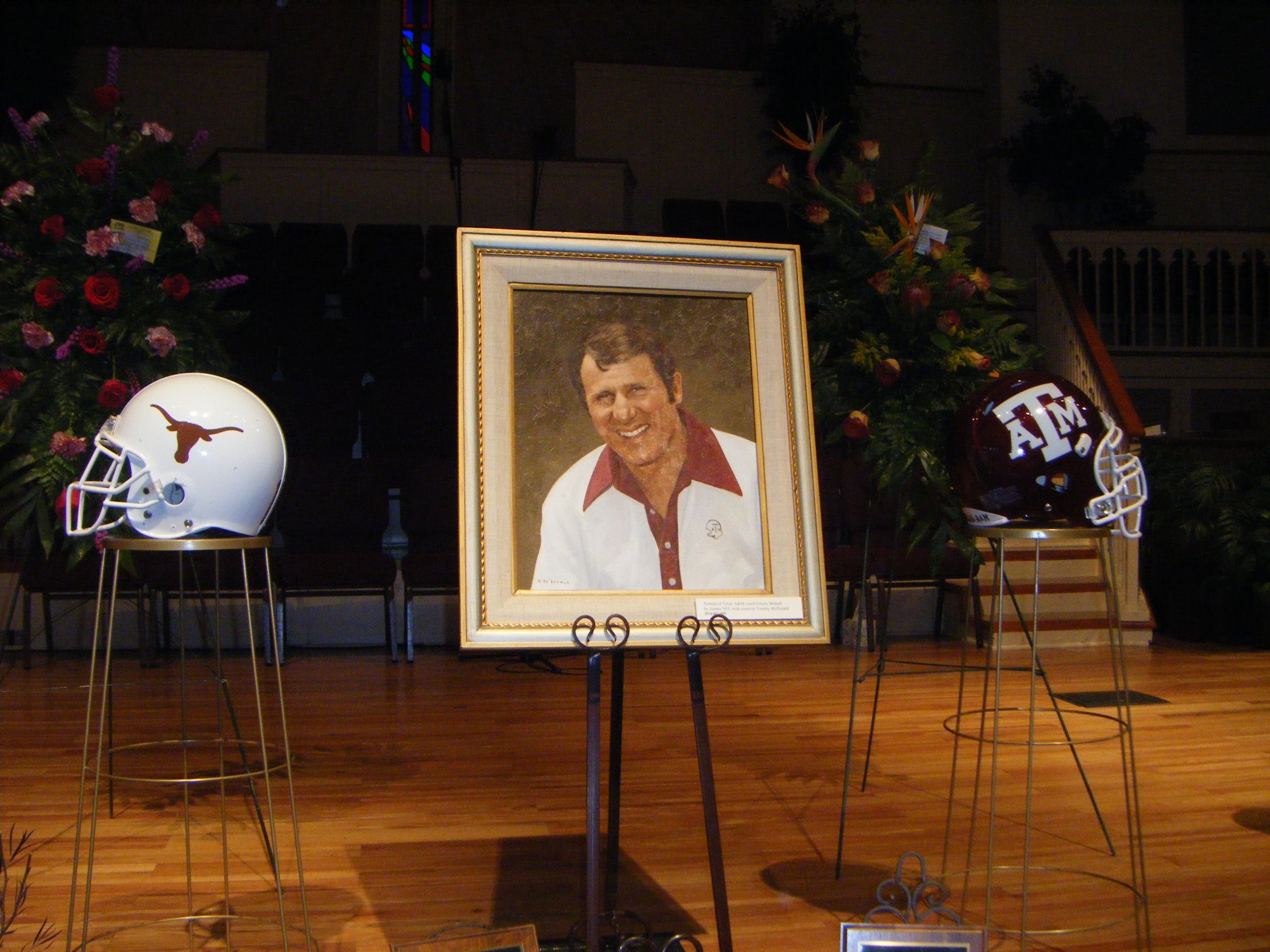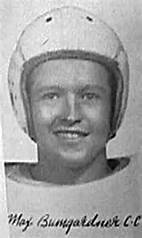A longhorn’s comment about the Aggie “midnight yell”!
““Damn, for the life of me, I don’t know why anyone would have to practice yelling.””
The Aggies inspiration to Saw Bevo’s horns off started in Biblical times.
“I will cut off the horns of the wicked. ”
Before the game started in 1951, all was good with the loyal fans from both Universities. Smiles and handshakes and prayers bonded all. Then a football was added to the mix, and peace and goodwill were nevermore. After the game was in the record book Texas Coach Ed Price, said about the Aggies ,
“They were the dirtiest bunch I ever played against.” “ I'm sorry I lost this one. It’s like losing a relative.”
Texas lost 22-21.
In her book “100 Things” Jenna McEachern says, “The rivalry started as a class war.” A & M was a branch of U.T. meant to focus on all things agricultural, mechanical, and military. On the other hand, Texas was to cover genteel subjects; classical studies, literature, languages, and fine arts. Professionals attended Texas. Blue-collar men went to A & M. Aggies were rural, and Longhorns were urban. Aggies “Whooped” while Horns sipped. This cultural class divide was defined as a battle between hippie liberals vs. cattle-loving hicks. Horns were progressive, and the Aggies were small-towners.
But in the last 20 years of the Aggie/Texas game, the rivalry remained strong but most of the cultural differences disappeared. Most all Aggie and Longhorn fans share a media world that has chosen to define America in snapshots instead of a panoramic view.
In some ways, the snapshot media homogenization of America into two or three groupthink classes saddens me. Still, being a realist and knowing I can’t fight the power of the media’s ability to control our destiny, I choose to control my personal identity while enjoying the passions evoked by this rivalry between two great universities.
After the Aggie-texas tradition ended in 2011, I think that R.C. Slocum and Mack Brown captured the essence of the rivalry in W.K. Stratton’s book “Backyard Brawl.
““It’s a real healthy rivalry. It’s the most healthy I’ve ever been around. There’s a lot of anger in the Texas-Oklahoma rivalry, and I’ve been on both sides of that one. A & M and Texas people want to win the game, they really want to beat each other, but when you look at the stands, there are a lot of families mixed between the burnt orange and maroon. R.C. and I have talked about it a lot. A large majority of the players on the field are from Texas, and all the fans, basically, are fro the state of Texas. Many people in this state would like to see the state of Texas be really good at football and r.c. I have said we’d like to see the conference championship and the national championship come down to A&M and Texas every year. It’s been a fun rivalry for me because I admire the A&M crowd- they’re a tough crowd over there. But, on the other hand, a lot of the A & M folks have been really nice to Sally and me.
”
Neither Texas nor A & M had an All-American the first 35 years of college football.
1894- Texas won 38-0
Texas played A & M in a practice game to prepare for their first game in the season against Tulane. Texas football started with a $100 budget. The game was played at Hyde Park, and the admission charge was $1.00.
1898- Texas wins 48-0
Texas and A & M met at Austin’s Athletic Park. The Aggies outweighed the Texas team's 15 pounds per man. Punting was a key offensive weapon, even on the first down. Touchdowns were 5 points, and the extra point was worth one point.
1899 Texas wins 6-0
Texas vs. A & M defined spirited and hard-ass football.
1899 Longhorns
A & M had a good team out scoring opponents 150 to 0.
Texas beat A & M 6-0, with A & M driving to the 2-yard line before fumbling. Texas recovered the fumble, and the Aggies disputed the call. A & M’s was so upset Captain Hall Moseley led his team off the field with 28 minutes to play.
1900
Texas and A&M played each other twice this year. Winning the first 5-0. The second game was played on Thanksgiving day. The Longhorns were in their new orange and white uniforms, defeating the Aggies 11-0.
1901- A & M is beating twice
Texas beats A & M twice - 17-0 and 32-0.
1902 -
In the Texas- A&M series, Texas scored the Aggies 157-0 . But A & M had company. Texas's record against Tulane was 6-0, Arkansas's 12-0, and Trinity's 5-0.
The First game in 1902 was a 0-0 deadlock, but the Aggies use the first recorded scout to study the game plan of Texas which led to a 11-0 win in game two.
1906 - Aggies build their stadium in a Mud field
The Longhorns laughed at the Aggie facilities fanning angst between the two universities. The fact that Longhorn fans laughed at the living conditions of the cadets who lived in large army tents fanned the flame of hate between the two universities. Fred Ramsell led the Longhorns to victory in Austin carrying the ball for nearly 200 yards and a 24-0 win. It was the Aggie’s only defeat this year.
Texas students lived better than Aggies in 1906.
Many Cadets lived in Tents
1907 - Texas and A&M play each other in Dallas and in Austin
The Dallas game ended in a tie, but the Aggie undefeated season ended in Austin on Clark Field 11-6. There was anger throughout all of Aggie land.
1908- Aggies and Texas played each other twice.
The first game was in Houston at the No-Tsu-oh carnival. Texas won 24-8, which angered many Aggies, and a fight ensued. A Texas player “William Trenckmann,” was stabbed. In the second game, both Universities put the bad blood from the first game behind them, but that did not help the Aggies. They lost the game 28-12.
1909- The Aggies sweep the series winning 23-0 and 5-0.
The new Aggies coach thought violence was part of the football game. Moran also required the player to attend class only the day before a game.
1910- Aggies under Moran win again 14-8 in Houston. Ten thousand fans packed into a stadium that held 8,000.
1921- 12th Man appears
A&M overcame 7 fumblse to preserve a 0-0 tie and maintain the Kyle Field jinx over the Longhornrsmanaged to tie the game even with 7 fumbles to keep the Kyle Field jinx .
1922
A & M - The little brother who thought he could -but could not!
Little Brother series record to Big Brother was 76-37-5. The Aggies tried everything to reach Big Brother status, including referring to Texas in their fight song, demeaning Horns as “teasips” (see link ORIGIN OF TEAPOTS (squarespace.com) for the whole story, starting the Aggie Bonfire tradition, and converting A & M from an all-male university to Co-educational. On the other hand , the Longhorns maintain a library of Aggie jokes to share with anyone who will listen.
How do you get a TEXAS A & M graduate off your porch? Pay him for the pizza.
The Texas and Texas A & M college football rivalry passion was formed over time from fans’ and players' hearts and souls. The football rivalry was formed from all factors that corrupt relationships- winning, losing, divisional rivalry, jealousy, money, grants, and cultural disparity.
Like unhappy marriages with so much bitter history, the Horns and Aggies could hardly stand to be in the same room together. So, the war between the two schools reached a personal level of disdain on the playing field where winners and losers were determined. Gloating after a victory and the mental anguish caused by a loss reached pathological extremes.
College football is built around major rivalries: traditional battles hallowed by time—intra-state border wars with fascinating backstories. Texas and Texas A&M were fine examples of an ultra-volatile blend of easily combustible tempers.
But two factors not mentioned above finally led the Aggies to choose to join the SEC.
Little Brother- Big Brother Syndrome: PR and the media chose Texas as Big Brother and Texas A & M as Little Brother. For Texas A & M Little brother, self-awareness was a conspicuous weakness. The term little brother was deemed incendiary and condescending by the Aggies. It was like the biblical Cain and Able story of a struggle to win at all costs. Little Brother's nomenclature led the Aggies to obsessions about status!! So Little Brother started to snipe at Big Brother. In A & M's case, Little Brother morphed into a strange kind of psychologically unhealthy collective spirit that only confirmed they were a little brother struggling to be recognized.
Like unhappy marriages, each administration could hardly stand to be in the same room together; the football sides of the two universities stopped speaking to each other back in 2011. That was the year Texas signed an exclusive $300 million television deal with ESPN, then declined to share the wealth with their league contemporaries or join them in a shared venture that would have seen everyone paid.
A & M chose to leave for more fertile grounds in the SEC, where they were recognized automatically as a Big Brother, receiving more money and more name recognition. All who read this article know the results of A & M moving to the SEC. A & M now has to compete against many more fast, powerful big brothers, resulting in a disappointing decade for the Aggies.
A&M looking at their SEC reflection in the mirror confirms, A & M is still the little engine who thought he could- but could not!
The History of the Longhorn and Aggies football battles
On Thanksgiving Day 2011, the third longest-running rivalry in college football ended. Texas and A & M met a total of 114 times, including 63 times on Thanksgiving. UT and the Aggies make note of their football rivalry in their fight songs, Aggie Bonfire, Texas hex rally, and the Aggie supper.
The first game pitted the University of Texas “Varsity” against the Texas A & M “Bryan’s. Texas won the game 38 -0. In 1894, The College Journal, the Aggies boasted of a “crack football team." The Austin Democratic Statesman praised the valor of the A & M players but stated, “they (the Bryans) were outclassed.”
The Texas A&M football squad was so demoralized by the defeat they scrapped the remainder of the schedule except for a contest against Galveston Ball high School six weeks later.
The school didn't field another team until 1896, and they wouldn't play Texas again until 1898. That produced an even worse outcome, a 48-0 defeat in Austin - the largest margin of victory in the history of the rivalry.
It took the Cadets 9 tries before they beat The Varsity 12-0.
The year 1901 would see the game held on Thanksgiving Day for the first time, and it has occurred on the holiday a total of 63 times.
Both the Horns’ and Aggie’s names evolved. Through the years, Texas A &M was known as the “Bryan’s”, Cadets, Farmers, and finally, the Aggies, University of Texas's name changes were fewer, starting with “varsity,” but more problematic, which required several trials of both acceptance than rejection before finally being officially named the Longhorns.
The defining story of A & M and Texas rivalry manifested itself in 2011. The TV broadcast of the final game moments captures all of the pent-up emotion and drama of 117 years of passion for winning the last game of the series. For the Aggies, winning was a get-out-of-jail-free card—a chance for a pardon for all the years of losing to the Horns. For the Longhorns, a win would maintain A & M as the loser and cast them into Longhorn purgatory.
The 2011 Game
The Aggie light switch went out for good in dramatic fashion on a good Thanksgiving night in 2011. With 1:48 left to play in the game and the series, the Aggies connected on a sixteen-yard touchdown strike to take a hair-raising 25-24 lead. The fan noise rose to deafening levels, like military jets winding up their engines on an aircraft carrier. Aggie's euphoria spread throughout Kyle Field. Texas A & M was going to win the game.
And then it happened! Following the kickoff, Case McCoy Texas executed a six-play drive that miraculously picked up 48 yards and left three seconds on the clock. Then, with everything on the line for the last 117 years - the past, present, and future-the Horns booted a towering, no-doubt-about-it 40-yard field goal as time expired to win, 27-25, and the Aggies have been silent ever since.
2011 football Alex Okafor, Kenny Vaccaro
There are many A & M and Texas back stories that, in time TLSN hopes to capture for posterity. This article is the start not the finish of the A & M and Texas cultural, academic, and athletic wars. There are many who are reading this article that can add some personal dimensions to one of the best rivalries in the history of NCAA football. Please share with billydale1@gmail.com
IN THE BEGINNING
For us "old" Texas fans, many years ago, the UT Greeks put up outside decorations prior to the Thanksgiving AM game. My relatives would come to Austin for the game. One year one of the decorations was a "menu" for Thanksgiving Dinner. I'll never forget it. Deviled eggs,and Reveille Rump Roast. There was a very slight snow-sleet one year. We were sitting in the north end zone. Texas was on defense. The cheer was "Push em back". My cousin said "All the way to San Antonio." Dr. Richard Seifert
On Thanksgiving Day 2011 , the third longest-running rivalry in college football ended. Texas and A & M met a total of 114 times, including 63 times on Thanksgiving. The first game was a one-sided Austin contest on October 19, 1894.
Texas A&M's 1894 football team, the school's first. Photo Cushing Memorial Library and Archives, Texas A&M University.
1894 Texas Longhorns
The first clash in the series in 1894 is one of the seminal moments for both storied programs. The first game pitted the University of Texas “Varsity” against the Texas A & M “Bryan’s”. Texas won the game 38 -0.
The Austin Democratic Statesman praised the A & M players but admitted: “they were outclassed.”
The Texas A&M football squad was so demoralized by the defeat they scrapped the remainder of the schedule except for a contest against Galveston Ball high School six weeks later.
The “Bryans” didn't field another team until 1896 and they wouldn't play Texas again until 1898. That produced an even worse outcome, a 48-0 defeat in Austin - the largest margin of victory in the history of the rivalry.
Texas played A & M 3 times before the turn of the Century and the combined score was Texas 92 A & M 0
It took the Cadets 9 tries before they final beat The Varsity.
1901
The year 1901 would see the game held on Thanksgiving Day for the first time and the game occurred on that holiday a total of 63 times.
1903
1903- A & M beats Texas for the first time in a decade. A & M played each other twice this year. The first was a tie, and the second a loss 12-0.
1906
This is the first year that a forward pass is allowed. Texas uses the forward pass to beat Texas A & M.
1907
Inspired by the bleachers built for the Missouri team, the players started a fund drive raising 675 dollars from donors, 132 dollars from the Athletic Council and persuaded the engineering department to do the construction. Clark Field stadium was built in one week in preparation for the A& M game. Texas won that game 11-6.
1909 The Farmers sweep the series.
The 1909 team was the only Aggie team to beat Texas twice in the same season
1911 Texas 6- A&M 0
Coach Wusmund fell to his death, and Billy Disch took over temporary coaching duties.
Both schools sent letters to the officials before the game requesting them to referee a football game not a wrestling match.
Coach Allerdice Longhorns and Texas A & M meet in Houston to play a game. A & M is undefeated and unscored on, and the Horns had only lost one game. Texas wins as Arnold Kirkpatrick picks up an Aggie fumble and returns for a touchdown. Author Kern Tips says the victory celebration by the Longhorn fans and angry Aggies after the game led to the first rupture of intercollegiate relations in the Southwest.
For the first time in 4 years, the Horns beat Coach Moran's team of Aggies, who "used dirty tactics to win. In fact, UT guard Marion Harold’s leg was intentionally broken by the Aggies, and the Longhorn fans decided to write a song.
To hell, to hell with Charley Moran,
and all his dirty crew.
If you don’t like the words of this song,
To hell, to hell with you.
The U.T. Athletic Association, due to unnecessary A & M roughness against the Horns’ suspends play with the Aggies. Chairman Mather of the U.T. Athletic Council sent a letter to Professor Bagley of Texas A & M stating, “ I beg to inform you that the Athletic Council of the University of Texas has decided not to enter into any athletic relationship with A & M College of Texas for the year 1912.” The suspension lasted until 1915 when the Southwest Athletic Conference was formed.
Texas and A&M did not play each other from 1912-1914.
The formation of the SWC and established recruiting in infraction rules brought the two Universities together to compete in football, basketball, baseball, and track
1915 A & M wins 13-0.
After A & M got rid of “Dirty Charlie Moran” Bellmont agreed to resume the series with the Aggies.
1915 Horns run onto the field Dittmar leads the way
Texas has 12 fumbles and completes only 3 of 23 passes to lose to Texas A & M 13-0. Bevo is branded with the “13-0” score into his hide. One legend has it that Texas found a way to turn the 13 into a “B”, while adding an “E” and “V” into the middle and then using the zero for an “O” to get B-E-V-O.
Of course, it is not true. See the naming of Bevo at https://texas-lsn.squarespace.com/naming-bevo-folklore-and-fables .
The SWC is formed to replace "town" play with college play. Arkansas, Baylor, Oklahoma Sooners, Oklahoma State, Rice Owls, Southwestern Pirates, Texas Longhorns, and Texas A & M form the SWC. Southwestern Pirates leave SWC 2 years later.
1916 Texas wins 21-7
Texas A&M visited Austin for the first time since 1909. A record attendance of 15,000 watched Texas defeat the Aggies. The game attendance set a record revenue of $20,260.
The game was so important to Texas that after the victory UT’s President Vinson declared Friday a school holiday.
Dittmar, Carlton, Hart, and Lang made the All- SWC team.
1918 -THANKSGIVING A & M TRADITION BEGINS.
Due to influenza, the A & M game was changed from early November to Thanksgiving day on a home-and-home basis. Texas wins the game 7-0.
1920
The Aggie supper tradition Begins.
From Jenna McEachern's book we learn:
The Aggie Supper tradition can be traced back to when Bully Gilstrap played for Texas in the early 1920s. When he came back to Texas as a coach, he was instrumental in keeping the tradition alive, telling one group of players, “It’s a tradition. You, seniors, need to go away by yourselves and figure out just how you’re gonna beat the Aggies.”
In the early days, players would go out to a Boy Scout hut in the country and the seniors would share with the underclassmen the tradition of whipping A&M. The supper has evolved over the years, and now the team gathers in the swanky Centennial Room and eats a catered meal. A few players are invited each year to share their memories of beating the Aggies.
In spite of the changes, it’s still the Aggie Supper, a players-only affair that connects the players to one another and to the history of the third-longest rivalry in all of college football."
Bully Gilstrap
One of the great games in the history of the battle between Texas and Texas A & M occurred in 1920. A & M had not been scored on in two years. The Longhorn team was composed of players with gangster names, such as Rats Watson, Hook McCullough, Swede Swenson, Maxey Hart, and Icky Elam. Both teams were undefeated, with Texas out-scoring opponents 275-10 and Texas A & M unscored on for the year. A record 20,000 fans attended the game. As time was running out, Texas won the game 7-3 on an Icky Elam trick play enabling Texas to win the SWC title.
1921
College football radio broadcasts can trace their roots to a 1921 rivalry clash at Kyle Field.
The 12th man appears.
The Aggies overcame 7 fumbles to preserve a 0-0 tie the the Kyle Field jinx over the Longhorns.
Program from the 1921 Aggies-Longhorn Thanksgiving Day football game.
A&M v. UT Game Launched College Football Radio Broadcasting. And the obsession possessed football state of Texas can lay claim to one of the game’s biggest innovations- radio broadcasting.
In the early 1910s, an employee with the Texas Fiscal Agency constructed facilities at each university designed to teach radio transmission to engineering students.
At the University of Texas, this evolved into brief weather and crop reports broadcasts. The man behind the broadcasts, physics professor Leroy Brown, built his equipment and, in 1917, taught the university’s first radio-focused course. Similar evolutions occurred in College Station.
Entering the First World War, UT-Austin equipment was used for more critical ends.
But in radio, these two Texas universities were at the forefront of the medium’s development and experimentation.
The opportunity for experimentation arose on the gridiron.
In 1921, Berry Whitaker’s Longhorns matched up against Dana X. Bible’s Aggies — who’d start the 12th Man tradition a year later — for the top spot in the Southwestern Conference on Thanksgiving Day. The previous year, UT went 9-0 and romped every team they faced except in their 7-3 win over A&M.
But what would be the feature of the game, the broadcast, was initially intended to convey the final score. Instead, human ingenuity took root.
These abbreviations were then relayed by W. A. Tolson, Frank Matejka, and a gaggle of others to multiple radio stations through Morse code, who would then announce the in-game action, albeit slightly delayed, over the ham relay station system.
And thus was borne the inaugural radio broadcast of a football game.
Going into the 1921 rivalry game, UT had lost only one game — a 20-0 drubbing at the hands of Vanderbilt — and A&M lost one to Louisiana State University and tied Rice. With the previous year’s tight finish, another nail-biter was on the horizon.
As it turned out, one can envision the broadcaster distraughtly relaying the final score pronouncing, “As God is my witness…I thought someone would score a point.”
The contest, aptly positioned as the season’s final game, finished in a knock-down, drag-out, barn-burning 0-0 tie.
With the tie, A&M supplanted UT as the champion of the Southwestern Conference and then went on to beat the Centre College of Danville Praying Colonels in the Dixie Classic, the precursor to the Cotton Bowl.
But it takes two to tango and that momentous achievement would not have been possible without their dreaded rivals, the Longhorns. Both deserve thanks for their part in changing the game that has captivated millions — whether from the stands, their couches, or their cars.
Image of W.A. Tolson in front of the Texas A&M radio equipment used two years later to broadcast the 1921 Aggie-Longhorn football game. (John West)
1922
In the book Back Yard Brawl by W.K Stratton, a story about losing home games to the Aggies is told. Future Longhorn Coach D.X. Bible rallied the Aggies at half-time, and the Horns lost at home 14-7. Longhorn Coach Berry Whitaker, who had elevated the Longhorn football game that had never been enjoyed, took the loss and the wrath of U.T., leading leader Luthcher Stark. Stark walked to the athletic offices and fired him on the spot. Stark’s message for all future Longhorn coaches you don’t lose to A & M in Austin and come back to coach again. For 60 years that maximum held true.
Make it stand out
Ed Bluestein was so upset at the loss to the Aggies he said, “tomorrow I’m calling my calculus prof and having him flunk me so I can come back next year and get another crack at those Aggies!” And that is what he did!
1923- Bluestein’s Revenge
Ed broke his leg before the A&M game so he watched the Horns beat the Aggies in a wheelchair on the sideline.
Despite being undefeated up to the Aggie game, the Horns were projected to lose to Texas A&M again but won the game 6-0.
The Horns broke a four-game losing streak to the Aggies.
1924 The Aggies wanted to fire Coach Bible
Texas students and alumni contributed to a stadium fund to build the first concrete stadium in the South. Thirty-five thousand fans attended the game. Fred Thompson and Stud Wright kicking won the game for the Horns 7-0. Texas won on a fluke play. The Texas quarterback overthrew Stookie Allen, and an Aggie defender chose to knock the ball down instead of intercepting it. The ball ricocheted into Stookie’s arms, and Texas scored. Many alumni wanted Bible fired.
Texas Memorial Stadium dedication game: Texas 7, Texas A&M 0 (11/27/1924 - Thanksgiving Day). 35,000 fans attend the dedication ceremony. Texas wins the game off a deflected pass for a touchdown by Longhorn Stookie Allen and a legend starts that the Aggies can not defeat the Horns in Austin. For 32 years that was true.
1925 - Mike Ashburn broadcast the first SWC game between Texas and
Money from oil made Texas the richest school in the world, but that did not help them beat the Aggies.
The Horns were favored to win but instead lost 28-0. It was the Horn’s worse defeat in league play. A & M won their 4th SWC crown.
1927 A & M wins 28-7
The largest crowd to see a football game in the Southwest (45,000) attended the Texas and Texas A & M game. The gate receipts were $93 283.
1928 The blown whistle
In 1928 the referees were slow to blow the whistle when the play was over. A ball carrier that was obviously down without the whistle blown was still an active play. An Aggie ball carrier learned this lesson the hard way. After intercepting a pass, Herschel Burgess was tackled. Thinking the play was over, he was in the process of handing the ball to the ref when a Texas player ran between them and took the ball. The ref gave Texas possession because he had not whistled the play over. Texas won 19-0.
1929- The Bad Core wins 13-0
Texas discontinued selling apples at home games because the cores were being thrown at the Longhorns. The Aggies offer athletic scholarships for the first time.
1930
One of the best Longhorn backfield combinations ever of Bull Elkins, Ernie Koy, Dexter Shelley, and Harrison Stafford demolished the Aggies 26-0 in front of 40,000 fans.
1933- 1934 - Coach Cevigney’s star dimmed quickly
1933 was Texas first losing season in 40 years . Texas and A &M tied 10-10
1934 - Texas plays Notre Dame and wins 7-6 ; Texas A &M and wins 14-0.
1937- Coach Bible accept the Longhorn Coaching job and has a awful year.
It was the first year that the tower 🗼 was lit for football victories. It was lit only twice this year. The Aggies won 7-0 on to keep the Aggie jinx’s alive.
1938- NELSON PUETT VS. TEXAS A & M
An Awful Year For "Ali Bible And The 40 Sieves" - Horns lose their first season-opening game in the History of Longhorn Sports. Poor Aggies- the Memorial stadium jinx continued. The Aggies still had not won a game in Memorial stadium. Texas's picked off 6 Aggie passes to salvage the only victory in 1938. The only good moment for the Aggies scored their first ever at Memorial stadium. Texas won 7-6
Nelson Puett 1938 touchdown to beat A & M
Remembering a Classic Game of the Old Longhorn-Aggie Thanksgiving Football Rivalry
Nov. 24, 1938
Published: August 29, 2019 at 10:16 am
The Texas Longhorns had lost 10 straight games when they welcomed the Texas A&M Aggies to Memorial Stadium in Austin for the 1938 edition of the annual Thanksgiving rivalry. Longhorn fans didn’t harbor much optimism for a win, considering the varsity team had lost a scrimmage to its own freshman team a week earlier. But with halfback Nelson Pruett’s diving touchdown (pictured), Texas took the lead and held on for a 7-6 win, blocking an Aggie extra-point attempt with 20 seconds to play. Texas coach Dana Bible later called it “the happiest day in all my years of coaching,” writer Bobby Hawthorne recounted in Longhorn Football: An Illustrated History. Texas A&M didn’t suffer for long, though, because the following year, the Aggies beat Texas as part of an undefeated season that culminated in a Sugar Bowl victory over Tulane and a No. 1 ranking in The Associated Press writers poll.
1939- Aggies are National Champions
This was the last loss to the Aggies for a decade. Coach Bible starts to turn the Longhorn program around.
Texas A&M’s last football national championship is closer to the Emancipation Proclamation (1862) than it is to the 2022 season.
1940 - Texas 7- A & M 0
The win against A & M only took 58 seconds, but beating the #1 team changed Longhorn football momentum for a decade. Bible knew how to feed off the emotion. He understood games were often won or lost in the dressing room before kick-off. He gathered the players and handed out copies of Edgar Guest’s poem titled:
"It Couldn't Be Done"
and then Bible read the poem to all the Longhorns, and 22 inspired young men on the field of battle defeated an Aggie team that was on the way to winning a second national championship.
It was the year that the Aggies cornered the market on Kleenex. The Aggies had 5 football passes intercepted. This win ends Texas A&M's 20-game winning streak and ruins A & M’s chance to repeat as National Champions and a trip to the Rose Bowl. Texas finished the season 8-2, its best record since 1932.
The only score is on the 3rd play of the game when Noble Doss' makes an "impossible catch" to set up a Texas touchdown.
1941
Texas fail from #1 in the nation to #16 after losing to TCU, and A&M replaced Texas as #1.
Since the Horns had not defeated A & M at Kyle field since 1920 Some UT fans implored Mrs. Augusta Hipple, a fortune teller, to help break the jinxes. She instructs the Longhorn fans to burn red candles, and the Longhorns would win. Pete Layden and Jack Crain led the Horns to a 23-0 victory.
Many years later, Mrs. Hipple shared her story about the Red Candle tradition. She told the students who came to see her in 1941 that "red means alert and that they needed something to show the team they were behind them." She concluded her interview by saying, "the boys were struggling so; they only needed something to relax the child that is within us all."
In Bill Little's book Texas Longhorn Stadium Stories, "the message of the red candles wasn't magic; it wasn't an ancient Chinese hex breaker. It was the simple truth that applies to whatever in life you choose to do. "There is a "force" out there when people band together in a common goal, and the strongest force of all is the bright, burning will that lives inside of you."
Texas ended the season as 4th in the nation and the Aggies finished 9th.
1942- Texas wins 12-6 and wins the swc
Thru 1942 the Aggies had won 8 SWC championships to Texas 4. Even though the series record since 1915 favored the Horns 15-11-2
1944- Bobby Lane is a freshman
Hub Bechtol wore this man from mars head gear to protect a broken jaw stopping the Aggies 4 times from the two-yard line to win the game 6-0.
1946 - Texas wins 24-7 Bible retired from coaching but remained as the UT athletic director
As of 1946, A & M’s offense had never scored a touchdown in Memorial stadium. The only two Aggie scores up to 1946 were from a punt return, a recovered fumble in the end zone, and 5 points earned in 1926. The Aggies were 0-12 in Memorial stadium.
Dale Schwartzkopf catches pass against A & M . Willie Zapalac in #39.
1947 - Tom Landry scores 5 touchdowns against A& M - Longhorns win 32-13.
1950
Aggies sowed Memorial Stadium’s turf with oats that spelled “A and M”. Coach Blair Cherry resigned because he could not be O.U., but he was 3-0-1 against the Aggies. Texas won 17-0.
1952 - Texas was ranked 8th in the nation
64,000 tickets were sold for the name and a T.V. audience brought the total viewers to 250,000. Texas won 32-12.
1953- Texas wins 21-12
1954- Texas wins 22-13
1955
In 1955 The red candles came out for the Texas A & M game. The Horns were heavy underdogs. The Hex was put on the Aggies, and the Hook’em Horns hand signal was introduced at the Friday night pep rally.
According to the book Junction Boys, the Aggies are put on probation due to testimony from Yoakum quarterback Bob Manning who signed with Texas, and Tom Sestak, who went to Baylor. Both players signed affidavits stating they were offered money to play at A & M. Aggies are put on probation and could not play in a Bowl game for two years.
1957
Texas meets #1 Texas A & M on national T.V. at College Station. The winner will go to the Sugar Bowl. The Horns won 9-7 which restored the domination of the Aggies for many years. Aggie head coach Bear Bryant said after the loss to Texas, “THEY JUST SEEM TO HATE US MORE THAN WE HATE THEM.”
Texas beats A & M led by Heisman winner John David Crow and Coach Bear Bryant and gets the Sugar Bowl bid.
1959
Bob Gurwitz's interception against A & M clinches the SWC championship in 1959.
1962 - Texas wins 13-3
This year the “Texas Ranger” poked fun of the Aggies saying “maybe the trouble with A&M isn’t the lack of women. Maybe it’s the lack of men.” The Bonfire and yell practice were the only thing to see because it was like a “good old-fashioned pagan ritual and fire dance…”
1962 Jerry Cook touch down against the Aggies
1963
1963 A & M Did Willenborg did he or didn't he intercept this pass . It was ruled incomplete.
The Aggie Coach called the 1963 loss to Ut “ the greatest injustice on a group of young fellows I’ve ever seen. This year, the Aggie administration finally got wise and admitted women. As all Longhorns knew from 1893 until the present, women on campus were a recruiting tool for young athletes.
Tom Wade
Tom Wade engineers most of an 80-yard drive In the last minute of the A & M game to salvage the win that makes it possible for the Longhorns to play Navy for the national championship.
1964- The Aggies interviewed Willie Zapalac an assistant to Bear Bryant, for the head coaching job. Let the record show that Texas had won 21 games since 1940 and A & M only 2.
1967
In 1967 Texas loses to Texas A&M for the first time in 10 years.
1968-1971 Emory Bellard’s Longhorn wishbone sets all the rushing records
1972
It takes two Longhorns - Coach Bellard and Donnie Wigginton- coaching for Aggieland to teach little brother how to play football again. After three great years of recruiting, Bellard and Wigginton resurrected the A & M football program.
1974
Visit this link for the 1974 Texas-A & M game.
https://texas-lsn.squarespace.com/1974-aggie-game-by-larry-carlson
At Memorial Stadium, the Aggies lose two fumbles on their first two offensive plays . Fifty-four seconds later the score is 14-0. On the Aggies third play, they fumbled again, but Texas only scored 3 points this time.
1975
Donnie Wigginton says “In our first two years of recruiting, we set a foundation of talent that served our program well. In ten-game seasons, in our first season, we won three games. In year two, we won five....a little better. Third year (eleven-game seasons began), we won eight and were making a name for ourselves. We won ten each year for the next two seasons and tied for first in the Southwest Conference. Very exciting.
1977 - Texas was the first team to notch 8 swc victories in a season.
In the Texas A & M game, Randy McEachern ties a record with 4 TD passes. Steve McMichael replaces an injured Russell Eerleben and kicks a 48-yard field goal. Texas set a record against Texas A&M by scoring the most points in the rivalry's history. It was also the most points an A & M team had ever surrendered. Texas won 57-28
April 7, 1977- Aggie coach Emory Bellard accused the Longhorn Athletic Director of NCAA rules violations. Bellard said, “Texas has broken as many rules as any university in the United States.” Royal challenged Bellard to report the violations to the NCAA so UT could respond to the lies by Bellard. Bellard then backed off his comments stating, “Texas had committed “technical” violations of NCAA rules. “But the University of Texas was not violating the spirit of the rules.”
1979 - Texas A&M 13-7
Texas was fighting for a share of the SWC crown, and a Sugar Bowl Bid, but fumbled the game away to the 5-5 Aggies.
1985- see link
1990
Visit this link for the 1990 Texas-A & M game https://texas-lsn.squarespace.com/1990-aggies-by-larry-carlson
1992
This season the Longhorns needed to beat the Aggies to pick-up their 6th win against a Division I team to qualify for the John Hancock Bowl. The Aggies beat the Horns for the 8th time in a row.
1995
The Aggies won 10 of the last 11 games against the Horns but were defeated in 1995 as Texas breaks A & M's 31-home-game winning streak to win the SWC title.
1996
Texas rolled up 594 yards of offense against Texas A & M. It was the most yardage in the history of the series up to this point (1996). See video link
1997-1998
1998 Last game before track removal: Texas 26, Texas A&M 24 (11/27/1998) Attendance: 83,687
Applewhite commits to A & M, but Aggie Head Coach Slocum fires the offensive coordinator, so Applewhite changes his commitment to Texas.
Ricky Williams
In spite of the Aggies keying on Williams, the Horns drove to inside the A&M ten on their third possession. But the defense held, and Texas settled for a short Kris Stockton field goal with just under five minutes left in the first period. Moments later, needing eleven yards for the record, Ricky broke two tackles and sped hard for the southeast corner's flag, taking Dorsett's monumental record along the way. One cutback and the last block from WR Wane McGarity ensured that Williams would complete the 60-yard sprint by tumbling into the end zone for a touchdown.
Musburger's excited call: "Ricky Williams runs... to the Hall of Fame...cuts back...touchdown, Texas! He does it in dramatic fashion...and a standing ovation...for the king of the rushers." Both Ricky and Brent were out of breath.
It was do-or-die time. Death or glory, so to speak. The must-have drive began at UT's 23 with 2:20 left.
The suspense was exhausting. But nickels and dimes had begun to add up. Ricky finally got a carry, good for seven yards, out of bounds at the Aggie seven. Nine seconds left. Stockton trotted on and more than 83,000 fans were roaring. I had emerged from the fetal position but was more than concerned than excited. Stockton had missed his last two. Was he spooked? I knew I was. Please, Lord....
Snap good. Hold down. And with medical precision (hey, Dr. Kris Stockton is now an orthopedic surgeon), the Longhorn kicker put it straight down the middle. Happy, happy, joy, joy! The sweetest field goal I had ever seen in all these years.
Longhorn fans mobbed Ricky, who had run for 259 yards and the record. Opie had passed for 232 and a TD. Stockton had 14 points. Let A&M head for the conference title game. This win was on the books now, and the scoreboard blared the latest victory to be etched into history: TEXAS 26 Texas A&M 24.
1999
In 1999 the collapse of the Aggie bonfire crushed the lives of many A & M students. It was a dark moment in the history of college sports. But, in a rare moment in Aggie and Longhorn sports history, both universities' swallowed their pride and understood that the joy of winning and the agony of losing are transitory and ultimately inconsequential. Eighty-six thousand fans - a record crowd in Texas at that time- with both President George Bush and Governor George W. Bush in attendance.
Still, the game was important, and both teams played their best football. Then, into this emotional vacuum, a story unfolds that merges the burnt orange and Maroon blood into one heartbeat for a split second. Longhorn football player Max Bumgardner's grandson Aggie Matt Bumgardner caught the winning touchdown that beat the Horns. Aggie quarterback Randy McCown said “We many not have had a Bonfire this year, but there was a Bonfire burning in our hearts today.”
It was an epiphany moment. It was the only day in my 73 years that I was “ok” with Texas A & M winning. It took the Longhorn band playing “Amazing Grace” to remind me that my life priorities were wrong.
For me beating Texas A & M was at the top of Maslow’s hierarchy of physiological needs- beat A & M , eat, sleep, and drink water. However, beating or losing to A & M is no longer a life-altering moment for me. With a new sense of maturity, id, and ego, I swallowed my pride after the Aggies won, smiled with a sense of deep reflection, and honored those who lost their lives.
IT WAS ONE HEARTBEAT MOMENT FOR BOTH UNIVERSITIES.
The Showband of the Southwest clutched A&M banners and then played the song Amazing Grace. Tears flowed freely in the stands.
Go to the 2:30 mark to remember what is essential in our life journey.
2005
2006
Freshman Colt McCoy leads a talented team. However, Colt gets hurt in the Texas A&M game, and the Longhorns lose.
2008
Last game on grass field: Texas 49, Texas A&M 9 (11/27/2008) Attendance: 98,621
2011
This Texas and Texas A&M game ended with a 3-pointer from Longhorn Justin Tucker with no time on the clock. This game defined each University's 117-year struggle for dominance with a win for the Longhorns. Feel the energy and passion to win in the video below.
The final matchup between the two schools took place in College Station, where the 25th-ranked Longhorns faced quarterback Ryan Tannehill. Neither team lit up the stat sheet, with Texas having 237 yards and Texas A&M having 328. Both teams had 10 penalties, totaling 187 yards.
Like the Longhorn basketball team victory this year, the Longhorn football team sent the Aggies to the SEC with a loss 27-25. With 1:18 remaining in the game, the Aggies were leading by one point. Case McCoy drove the Horns on their best drive of the day, setting up Tucker's field goal to win the game. The final record for the series was Texas 76 wins and A & M 37 wins. Tucker hit the field goal to give the Longhorns their 76th win in series history. Texas ended the rivalry the only way they knew how, with a win.
The light had gone out for the Aggies in good dramatic fashion on a fine Thanksgiving night in 2011. With 1:48 left to play in the game and the series, the Aggies connected on a sixteen-yard touchdown strike to take a hair-raising 25-24 lead. The racket within the big cauldron at Kyle Field rose to deafening levels. Aggie euphoria swept the stands. And then it happened. Following the kickoff, Texas executed a six-play drive that miraculously picked up 48 yards and left three seconds on the clock. With everything, the past, present, and future, on the line, the Horns booted a towering, no-doubt-about-it 40-yard field goal as time expired to win, 27-25, and absolutely silenced that boiling sea of Aggies’ fanatics in College Station.
2012 GOOD BYE TO THE AGGIES (squarespace.com)
Largest wins: Texas 48-0 in 1898, Texas A&M 42-10 in 1985
Date Location Winning team Losing team
1894 Austin Texas 38 0
1898 Texas 48 0
1899 San Antonio- Texas 6 0
1900 San Antonio -Texas 5 0
1901 San Antonio- Texas 17 0
1902 San Antonio- Tie 0 0
1903 Texas 29 6 November 24, 1904[t]
1904 Texas 34 6
1905 Texas 27 0
1906 Texas 24 0
1907 Dallas- Tie 0 0
1908 Houston- Texas 24 8
1909 Houston- Texas 28 12
1909[t] Austin- Texas A&M 5 0
1910 Houston- Texas A&M 14 8
1911 Houston- Texas 6 0
1912 thru 1914 Texas refused to play A & M
1915 College Station- Texas A&M 13 0
1916 Austin- Texas 21 7 20
1917 College Station- Texas A&M 7 0
1918 Austin- Texas 7 0
1919[t] College Station- Texas A&M 7 0
1919 College Station- Texas A&M 13
1920 Austin- Texas 21 7
1920 College Station- Texas A&M 7 0
1921 College Station - Tie 0 0
1922 Austin- Texas A&M 14 7
1923 College Station- Texas 6 0
1924 Austin- Texas 7 0
1925 College Station- Texas A&M 28 0
1926 Austin- Texas 14 5
1927 College Station- Texas A&M 28 7
1928 Austin- Texas 19 0
1929 College Station- Texas A&M 13 0
1930 Austin- Texas 26 0
1931 College Station- Texas A&M 7 6
1932 Austin- Texas 21 0
1933 College Station- Tie 10 Tie 10
1934 Austin- Texas 13 0
1935 College Station- Texas A&M 20 6
1936 Austin -Texas 7 0
1937 College Station- Texas A&M 7 0
1938 Austin- Texas 7 6
1939 College Station- #1 Texas A&M 20 0
1940 Austin- Texas 7 0
1941 College Station #10- Texas 23 0 November 26,
1942] Austin- #18 Texas 12 6
1943 College Station- #12 Texas 27 13
1944 Austin- Texas 6 0
1945 College Station- #10 Texas 20 10
1946 Austin- #20 Texas 24 7
1947 College Station- #7 Texas 32 13
1948] AustinTie 14 14
1949 College Station -Texas 42 14
1950 Austin- #3 Texas 17 0
1951 College Station- Texas A&M 22 21
1952 Austin- #10 Texas 32 12
1953 College Station- #7 Texas 21 12
1954 Austin- Texas- 22 13
1955 College Station Texas- 21 6
1956 Austin- #5 Texas A&M 34 21
1957 College Station- Texas 9 7
1958 Austin- Texas 27 0
1960 College Station- #4 Texas 21 14
1961 Austin-Texas 25 0
1962 #5 Texas 13 0
1963 Austin- #4 Texas 15 13
1964 Austin -#5 Texas 26 7
1965 College Station- Texas 21
1966 Austin- Texas 22 14
1967 College Station- Texas A&M 10 7
1968 Austin- #6 Texas 35 14
1969 College Station- #1 Texas 49 12
1970 Austin #1- Texas 52 14
1971 College Station- #12 Texas 34 14
1972 Austin #7- Texas 38 3
1973 College Station- #11 Texas 42 13
1974 Austin- #17 Texas 32 3
1975 College Station- #2 Texas A&M 20 10
1976 Austin- #11 Texas A&M 27 3
1977 College Station- #1 Texas 57 28
1978 Austin- #14 Texas 22 7
1979 College Station- Texas A&M 13 7
1980 Austin- Texas A&M 24 14
1981 College Station- #7 Texas 21 13
1982 Austin- #14 Texas 53 16
1983 College Station- #2 Texas 45 13
1984 Austin- Texas A&M 37 12
1985 College Station- #15 Texas A&M 42 10
1986 Austin- #10 Texas A&M 16 3
1987 College Station- #15 Texas A&M 20 13
1988 Austin- Texas A&M 28 24
1989 College Station- #16 Texas A&M 21 10
1990 Austin- #5 Texas 28 27
1991 College Station- #10 Texas A&M 31 14
1992 Austin- #4 Texas A&M 34 13
1993 College Station- #8 Texas A&M 18 9
1994 Austin- #11 Texas A&M 34 10
1995 College Station- #9 Texas 16 6
1996 Austin- Texas 51 15
1997 College Station- #15 Texas A&M 27 16
1998 Austin- Texas 26 24
1999- College Station -#24 Texas A&M 20 16
2000- Austin- #12 Texas 43 17
2001 College Station- #5 Texas 21 7
2002 Austin -#10 Texas 50 20
2003 College Station- #6 Texas 46 15
2004 Austin- #5 Texas 26 13
2005 College Station- #2 Texas 40 29
2006 Austin -Texas A&M 12 7
2007 College Station- Texas A&M 38 30
2008 Austi- n #4 Texas 49 9
2009 College Station- #3 Texas 49 39
2010 Austin- #17 Texas A&M 24 17
2011 College Station- #25 Texas 27 25
TLSN TLSN TLSN TLSN TLSN











